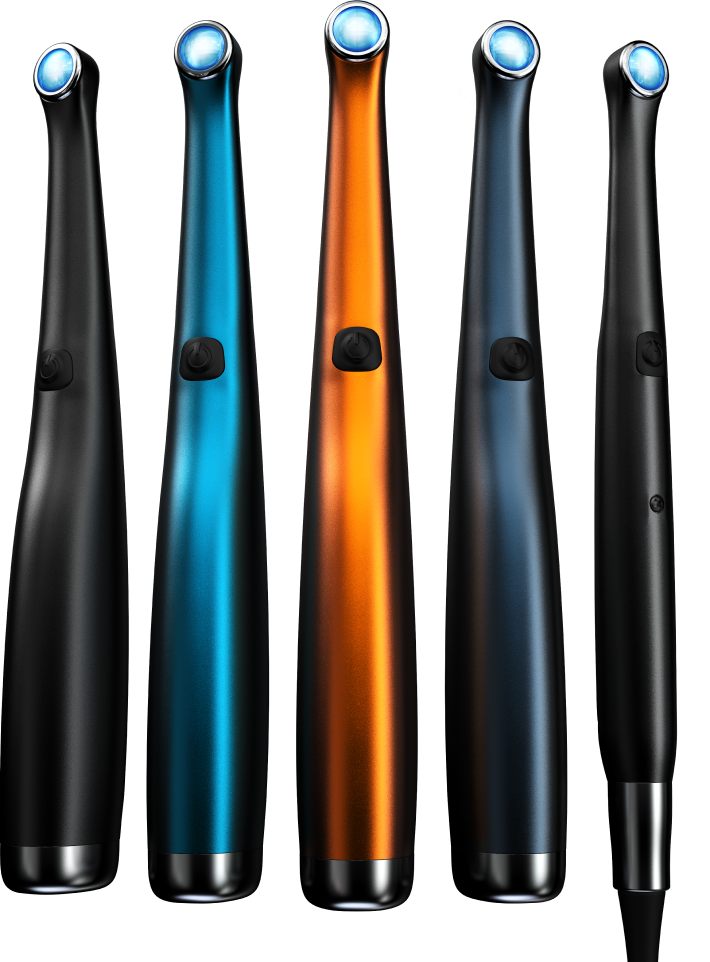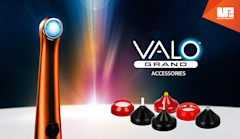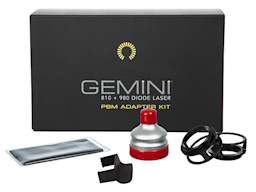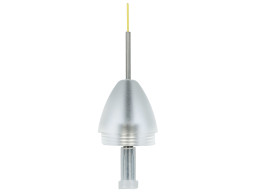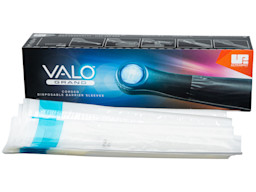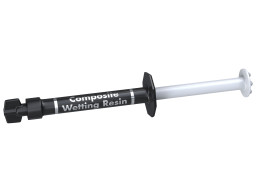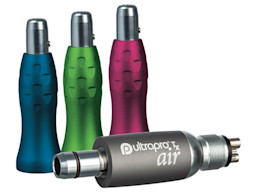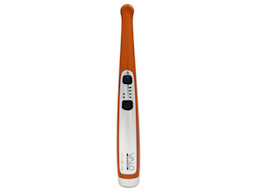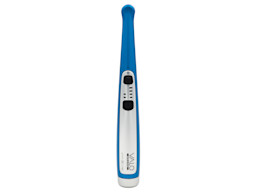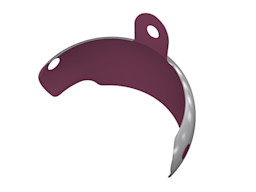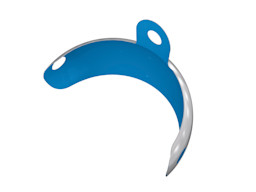Free Standard Shipping on All Orders $285+
Instructions for Use (IFU)
Safety Data Sheets (SDS)
Product Allergens
See any common allergens this product may contain >>Price breaks are offered on most items...
This amount is an estimate based on retail price. The actual amount due (shown at the final stages of your order) may be different from what is displayed here.
Return Policy
Items returned within 30 days of purchase with a return authorization number on the outside and inside of the return box will be credited 100%. Product returned between 31 and 60 days from purchase date is subject to a 20% restocking fee. Ultradent will not accept returns after 60 days. Errors in shipment must be reported within 14 days of invoice date. All return authorization numbers become invalid 90 days after date of issue. A return authorization number must accompany all returns to receive proper credit. Please contact Customer Service at 800.552.5512 for assistance.
Limited Warranty
Ultradent Products, Inc. ("Ultradent") warrants that this product shall, for a period of 5 years
from the date of purchase, when operated according to the operating instructions included with
the product, (i) conform in all material respects to the specifications set forth in Ultradent's
documentation accompanying the product; and (ii) be free from defects in material and
workmanship. This limited warranty is nontransferable and applies solely to the original
purchaser and does not extend to subsequent owners of the product. This limited warranty does
not cover any accessory components such as, but not limited to, batteries, chargers, adapters,
or adaptive lenses. This limited warranty is void if the product is damaged due to negligence,
abuse, misuse, accident, modification, tampering, alteration, or failure to follow the
applicable instructions for use. To qualify under this limited warranty, proof of purchase
(e.g., sales receipt or similar documentation) must be submitted to Ultradent along with the
defective product.
Ultradent will either repair or replace defective products, in its sole discretion, that fall
under this warranty. In no event shall Ultradent's liability for the product exceed the purchase
price paid by the purchaser. Under no circumstances shall Ultradent be liable for any indirect,
incidental, foreseen, unforeseen, special, or consequential damages arising out of or in
connection with the use of this product.
The VALO Grand LED curing light uses a custom, multiwavelength light-emitting diode (LED) for producing high-intensity light at 385-515 nm, which is capable of polymerizing all light-cured dental materials. This intensity will also penetrate porcelain and is capable of curing underlying resin cements. The handpiece is designed to rest in a standard dental unit bracket or can be custom-mounted using the bracket included in the kit. The VALO Grand Cordless LED curing light can be stored on a countertop or in a drawer. International power supply of the VALO Grand Corded LED curing light is suitable for power outlets from 100 to 240 volts; no batteries needed. The battery-operated, cordless wand design of the VALO Grand Cordless LED curing light provides optimal convenience and flexibility. The VALO Grand Cordless LED curing light is equipped with a sensor that registers movement of the light; when the light is not being used, the VALO Grand Cordless LED curing light will automatically go into sleep mode and will return to the most recently used setting when moved.
- Available in cordless or corded version
- Ultra-high-energy broadband LEDs cure all dental materials
- Three curing modes—Standard Power, High Power Plus, and Xtra Power—accommodate your preferences
- Optimally collimated beam delivers consistent, uniform power
- Extremely durable, slim, ergonomic shape allows unprecedented access to all restoration sites1
- Unique unibody design is extremely durable and lightweight
- Highly efficient LEDs and aerospace unibody aluminum keep wand body cool to the touch
- Second activation button on the underside allows for intuitive operation
- Battery-operated, cordless wand design of the VALO Grand cordless curing light provides optimal convenience and flexibility
- International power supply of the VALO Grand corded curing light is suitable for power outlets from 100 to 240 volts; no batteries needed
View VALO Curing Light Accessories »
Limited Warranty
Ultradent Products, Inc. ("Ultradent") warrants that this product shall, for a period of 5 years
from the date of purchase, when operated according to the operating instructions included with
the product, (i) conform in all material respects to the specifications set forth in Ultradent's
documentation accompanying the product; and (ii) be free from defects in material and
workmanship. This limited warranty is nontransferable and applies solely to the original
purchaser and does not extend to subsequent owners of the product. This limited warranty does
not cover any accessory components such as, but not limited to, batteries, chargers, adapters,
or adaptive lenses. This limited warranty is void if the product is damaged due to negligence,
abuse, misuse, accident, modification, tampering, alteration, or failure to follow the
applicable instructions for use. To qualify under this limited warranty, proof of purchase
(e.g., sales receipt or similar documentation) must be submitted to Ultradent along with the
defective product.
Ultradent will either repair or replace defective products, in its sole discretion, that fall
under this warranty. In no event shall Ultradent's liability for the product exceed the purchase
price paid by the purchaser. Under no circumstances shall Ultradent be liable for any indirect,
incidental, foreseen, unforeseen, special, or consequential damages arising out of or in
connection with the use of this product.
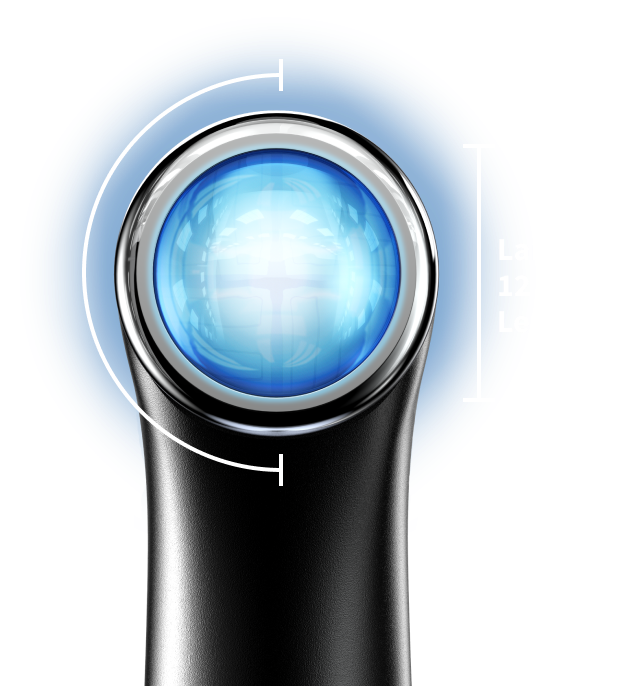


Award-winning VALO™ Curing Light With a Larger 12 mm Lens
The VALO Grand curing light features everything you’ve come to love from the VALO curing light family, but with a larger lens. The 12 mm lens is designed to easily cover a 10 mm molar for quick and effective curing. The power button on the underside allows for more intuitive operation.
The Power of the VALO™ Grand LED Curing Light
The VALO Grand light uses a custom, multiwavelength light-emitting diode (LED) for producing high-intensity light at 385–515 nm capable of polymerizing all light-cured dental materials. This intensity will also penetrate porcelain and is capable of curing underlying resin cements similar to a quality halogen light.
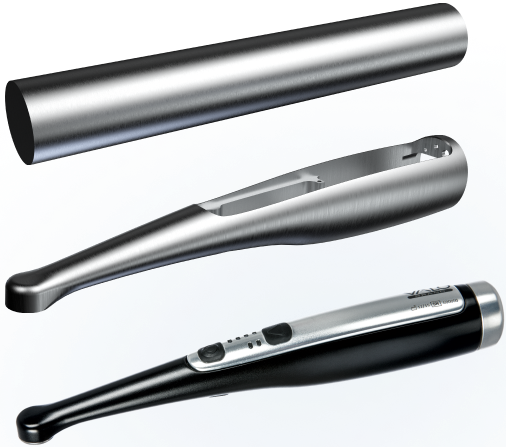
Built to Last
Every VALO Grand curing light starts as a solid bar of hardened, high-grade aerospace aluminum, which is CNC precision milled at Ultradent’s facility in Utah, USA. The unibody construction ensures durability and provides unsurpassed heat dissipation. The elegant, ergonomic, and streamlined design enables the VALO Grand light to easily reach all curing sites without sacrificing patient comfort. The aluminum wand, machined components, and tempered glass lens make it more durable.
Unparalleled Accessibility
The VALO curing light family has a low-profile head and slim body, allowing easy and direct access to all curing sites.

















Technical Details

12 mm Lens
The VALO Grand curing light offers the same accessibility, durability, and power as any curing light in the VALO curing light family, but is differentiated by a large, 12 mm lens. The VALO Grand light still has the same power output, but with a larger footprint, it is able to cure a larger area quickly and effectively.
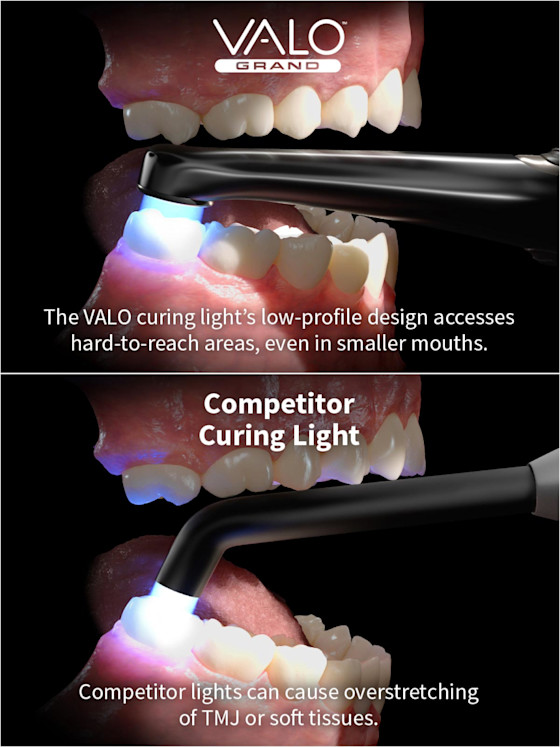
Unprecedented Access
The low-profile design of the VALO cordless curing light allows for great accessibility to all areas of the mouth.1 The VALO Grand curing light head height only measures 11 mm high, allowing it to fit over posterior teeth without causing patient discomfort. In addition, the VALO Grand light’s larger footprint can cure the entire surface of a Class II posterior preparation in just one exposure.
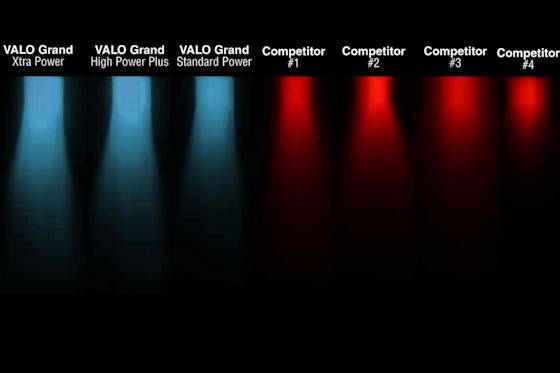
Beam Collimation and Uniformity
The collimation of a curing light’s beam affects the amount of energy that reaches the restoration site. A beam that disperses will deliver less power than a beam that remains collimated; a dispersed beam can lead to undercured restorations and eventual failures. The VALO Grand curing light delivers optimally and consistently collimated power. With refined optics that create excellent light collimation across a 12 mm lens, the VALO Grand light maintains intensity over a greater range of distances.
We recommend placing the curing light as close as possible to the restoration while curing. To control heat, we recommend using multiple shorter curing cycles rather than one long curing cycle.
In addition to its collimation, a beam’s uniformity affects energy delivery across the restoration site. A beam with hot or cold spots yields inconsistent curing, which can compromise restorations and cause sensitivity. The VALO Grand light contains multiple LEDs and specialized optics to produce evenly distributed energy to deliver consistent results, regardless of the restoration type, size, or location.
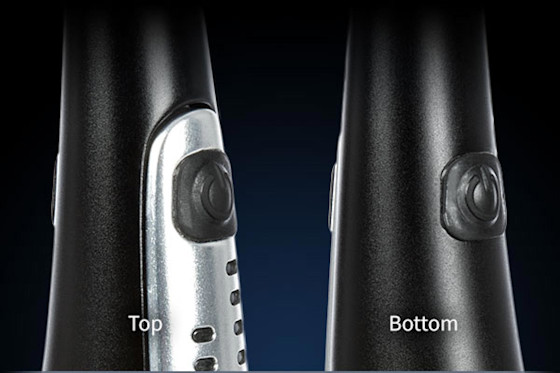
Two Curing Buttons
The VALO Grand curing light has two curing buttons, a curing button on top and one on the underside for intuitive operation.
Spectral Distribution
The VALO curing light uses a custom, multiwavelength light-emitting diode (LED) for producing a high-intensity light at 385–515 nm. This LED pack produces true broad-spectrum light, which provides uniform curing across the restoration with two significant peak wavelengths, utilizing two shades of blue and violet required for lower-level initiators. This means that the VALO light is capable of polymerizing all light-cured dental materials—including camphorquinone and the entire range of proprietary photoinitiators.2
As the options for light-cured materials keep expanding, the composition of the materials becomes more and more varied. Aside from camphorquinone, many manufacturers have turned to other photoinitiators particularly for esthetic composites. Photoinitiators such as Lucerin and PPD require low-wavelength light for complete polymerization. With the VALO light’s reliable and proven performance, you can be certain you’ll get a quality cure, regardless of the material.
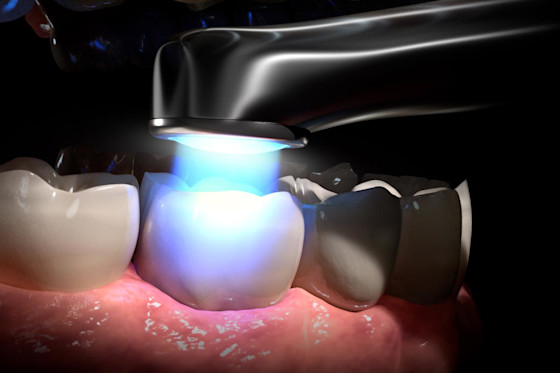
Complete Cure With Any Composite
When composite is exposed to light, its reaction depends on the composite’s hue, refractive properties, filler type, filler load, and translucency/opacity. Regardless of variations in composite, the VALO Grand curing light has the ability to provide a complete cure because of its power distribution and output of broad-spectrum light, which effectively penetrates layers of composite.
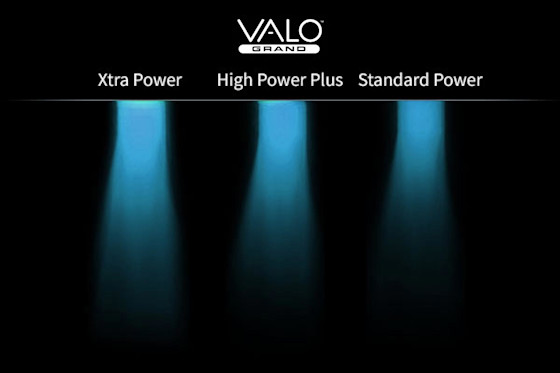
Three Powerful Curing Modes
- Xtra Power: 3200 mW/cm2
- High Power Plus: 1600 mW/cm2
- Standard Power: 1000 mW/cm2
Frequently Asked Questions
-
What are the differences between the VALO Grand curing light and the VALO Cordless light?
The VALO Grand light and the VALO Cordless light both offer the same power output and beam intensity, and both have a lightweight, durable wand-style body. However, the VALO Grand light has a 50% larger footprint, with a lens measuring 12 mm. The VALO Grand light also has as an additional curing button on the underside to allow for more intuitive operation.
-
Are the modes and wavelength in the VALO Grand light the same as in the original VALO light?
Yes.
-
How many batteries come in the VALO Grand Cordless kit?
Four. The batteries that have been selected are inexpensive, convenient, and have been specifically chosen for their ability to deliver the same power and output of the original corded VALO light.
-
Are the batteries rechargeable?
Yes.
-
Is the battery charger included in the kit?
Yes.
-
Can I use any type of batteries in the VALO™ battery charging units?
The VALO™ battery charging units are designed to only work with VALO™ branded rechargeable batteries.
-
Do replacement batteries have to be purchased from Ultradent?
We recommend using VALO batteries, which are inexpensive and rechargeable, to ensure the best performance of your VALO curing light.
-
Can batteries, chargers, etc. be purchased separately from the kit?
Yes.
-
Can a VALO Grand curing light be purchased separately from a kit?
Not at this time.
-
How long will the battery on the VALO Grand Cordless light last?
Charged, VALO batteries will last ~400 cure cycles or ~1 week on average. The battery can be charged 1000–2000 times before a replacement may be needed.
-
How does the battery charge work on the VALO Grand Cordless light? Will I lose intensity if the charge starts fading?
Even when the charge starts fading on your VALO batteries, the power intensity remains the same.3 If you use the same batteries for a VERY extended time period, the battery life will wear down, and they will simply need to be charged more frequently (similar to a cell phone); however, the power intensity will remain the same, always.
-
What do I do if my batteries appear to be charged but the VALO Grand Cordless light indicates low battery?
Try one of the following:
- Remove the back cap and then refasten it
- Try a different set of batteries that you know are charged
-
How do the Standard Power, High Power, and Xtra Power (Plasma Emulation) modes differ? Which mode should I use?
As its name implies, Standard Power mode is the standard mode of operation (1000 mW/cm2). High Power mode (1400 mW/cm2) is more powerful than Standard Power mode and shortens the curing time. For example, a 10-second cure in Standard Power mode would take 4 seconds in High Power mode, saving 6 seconds. Xtra Power, or Plasma Emulation, mode is the most powerful mode (3200 mW/cm2). It offers similar intensity to plasma arc lights and is ideal for those practitioners who are interested in or currently using a plasma arc curing light. It is especially effective in situations where you need to cure as quickly as possible, such as curing a sealant on an uncooperative child.
-
Why would I use the Xtra Power mode?
Xtra Power mode supports the “higher intensity/shorter exposure time” philosophy. For example, you might want to cure a sealant on an uncooperative child as quickly as possible. With the VALO Grand curing light, you can quickly achieve a complete cure in Xtra Power mode.
-
Why would I use the High Power mode?
High Power mode shortens curing time for composites and other products. The VALO Grand light’s power output shortens curing time from 10 seconds in Standard Power mode to 4 seconds in High Power mode, saving 6 seconds per cure.
-
How does Xtra Power mode compare to plasma arc lights?
Xtra Power mode offers similar intensity to plasma arc lights, allowing you to shorten exposure time. But the VALO Grand light costs significantly less than a plasma arc light, it doesn’t take up as much room, and it doesn’t need bulb replacements.
-
Will using Xtra Power mode cause my composite to shrink more than if I use Standard Power or High Power mode?
Regardless of how a composite is cured, it will shrink only the amount it was designed to by the manufacturer. The amount of stress applied will differ from Standard Power mode to higher-intensity modes, but this can be overcome with different placement methods.
-
How can I reduce the amount of stress affected by the rate of shrinkage when using the higher-intensity modes?
There are a few accepted methods for reducing the stress from the composite being cured with high-intensity lights. Here are three:
- Place a maximum thickness of 2 mm increments. This will eliminate as much stress as possible.
- Wedge the increments to decrease the amount of tooth surfaces being cured at one time.
- Allow a second or two between cures to let the composite rest.
-
Does the heat from the VALO Grand light’s Xtra Power mode affect the tooth?
While the Xtra Power mode is able to produce intensity similar to a PAC light, it does not produce the same amount of heat as a PAC light.
VALO Grand curing light in Xtra Power mode and all other curing lights, do raise the temperature of the composite restoration. There are two sources for this rise in temperature: the energy emitted from the light and the exothermic reaction of the composite as it cures. In a test performed, the VALO curing light did not cause damage in terms of temperature increases in pulp chambers while in Xtra Power mode.4 The blood flow of the tooth is its cooling mechanism and is one of the reasons why the pulp is minimally affected.
-
You say the heat in Xtra Power mode does not adversely affect the tooth, but it does cause discomfort on my finger when I test it. Why?
You are feeling the heat on your soft tissues, which reacts differently than the tooth structure. The finger has a “red” tone to it, which absorbs the energy and causes you to feel the heat. In a test performed, the VALO curing light did not cause damage in terms of temperature increases in pulp chambers while in Xtra Power mode.4 Additionally, the blood flow in the tooth immediately cools whatever heat is applied.
-
Does heat from the higher-intensity modes affect soft tissues?
The VALO Grand curing light’s instructions include a warning about placing the beam on soft tissues. The VALO Grand light, like all other curing lights, will generate enough heat to make the patient aware of the heat on the soft tissues. If held on the soft tissues for an extended period of time, the VALO Grand light, like all other curing lights, could cause damage to the soft tissues.
Damage is a function of two things: heat and duration without relief.
Brief exposure to higher temperatures is possible without damage. The body has cooling mechanisms such as respiration and blood flow. Live dental pulp uses blood flow as a cooling mechanism.
-
What cleaning agents should I use to clean the VALO curing light?
To clean the VALO curing light, you should use isopropyl-alcohol based cleaners, ethyl alcohol-based cleaners, or another non-bleach, non-abrasive cleaner. We recommend using:
- Isopropyl alcohol
- Ethyl alcohol-based cleaners
- Lysol®* Brand III Disinfectant Spray (recommended)
- Lysol®* Concentrate (alcohol-based only)
We have seen repeated issues of corrosion and discoloration with the use of CaviCide products over time, so we no longer recommend using CaviCide to clean your VALO curing light.
Please note: Damage to the VALO curing light caused by the use of cleaning products, including discoloration and corrosion, is not covered under the VALO curing light warranty.
*Trademark of a company other than Ultradent Products, Inc.
-
What is the VALO Grand light’s depth of cure?
Depth of cure is more dependent on the type of composite being cured than the light being used. However, for maximum effectiveness, we recommend curing at 2 mm increments regardless of which mode you are in.
-
Is it possible to cure sealants in three seconds with the VALO Grand curing light?
Yes, The VALO Grand curing light cures UltraSeal XT™ plus sealant in three seconds in Xtra Power mode.

